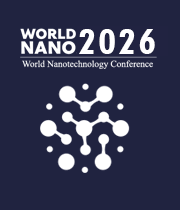Risk Assessment
Nanobiotechnology are increasingly used in a variety of industries, from medicine and electronics to cosmetics and textiles. However, their unique properties also bring potential risks to humans, animals, and the environment. As such, assessing the risks associated with Nanobiotechnology is an important step in their safe and effective use. Risk assessment of Nanobiotechnology involves evaluating both their potential benefits and potential hazards. The process typically begins with an initial assessment that takes into account the characteristics of the nanomaterial and its intended use. The assessment then moves on to consider the potential risks associated with each use. This involves examining the nanomaterial’s toxicity, the potential for exposure, and other factors such as the human and environmental fate of the material. The next step in the risk assessment process is to identify any potential risk mitigation strategies. These can include identifying substitutes with lower risk, using various containment systems, or developing more effective methods of disposal. All of these strategies must be carefully evaluated to ensure that they reduce the risk of harm to humans, animals, and the environment. Finally, the risk assessment process should consider the rate at which new data and information become available.

Harry Ruda
University of Toronto, Canada
Raman Singh
Monash University, Australia
Paulo Cesar De Morais
Catholic University of Brasilia, Brazil
Xiao Hong Nancy Xu
Old Dominion University, United States
S V A R Sastry
Harcourt Butler Technical University, India
Vinayak Adimule
Angadi Institute of Technology and Management, India



Title : Nanomaterial-based bio-lubricant additives for improved efficiency and environmental sustainability in automotive applications
S V A R Sastry, Harcourt Butler Technical University, India
Title : Harnessing the unique properties of engineered nanostructures for sensing
Harry Ruda, University of Toronto, Canada
Title : Circumventing challenges in developing CVD graphene on steels for extraordinary and durable corrosion resistance
Raman Singh, Monash University, Australia
Title : 40,000 implants in humans and no failure: The impact of nanomedicine
Thomas J Webster, Hebei University of Technology, China
Title : Evaluating cytotoxicity of metal-doped tin oxide nanoparticles
Paulo Cesar De Morais, Catholic University of Brasilia, Brazil
Title : Lipid nanoparticles formulations: From bench scale to industrial scale
Mohammad A Obeid, RAK Medical and Health Sciences University, United Arab Emirates